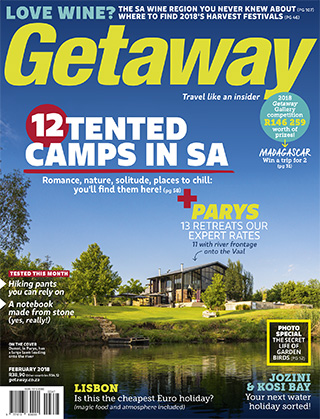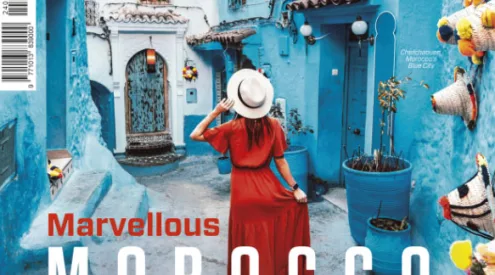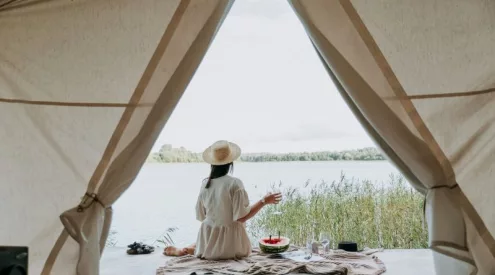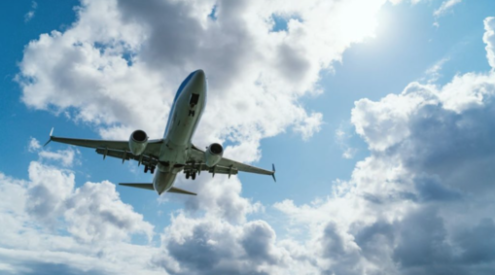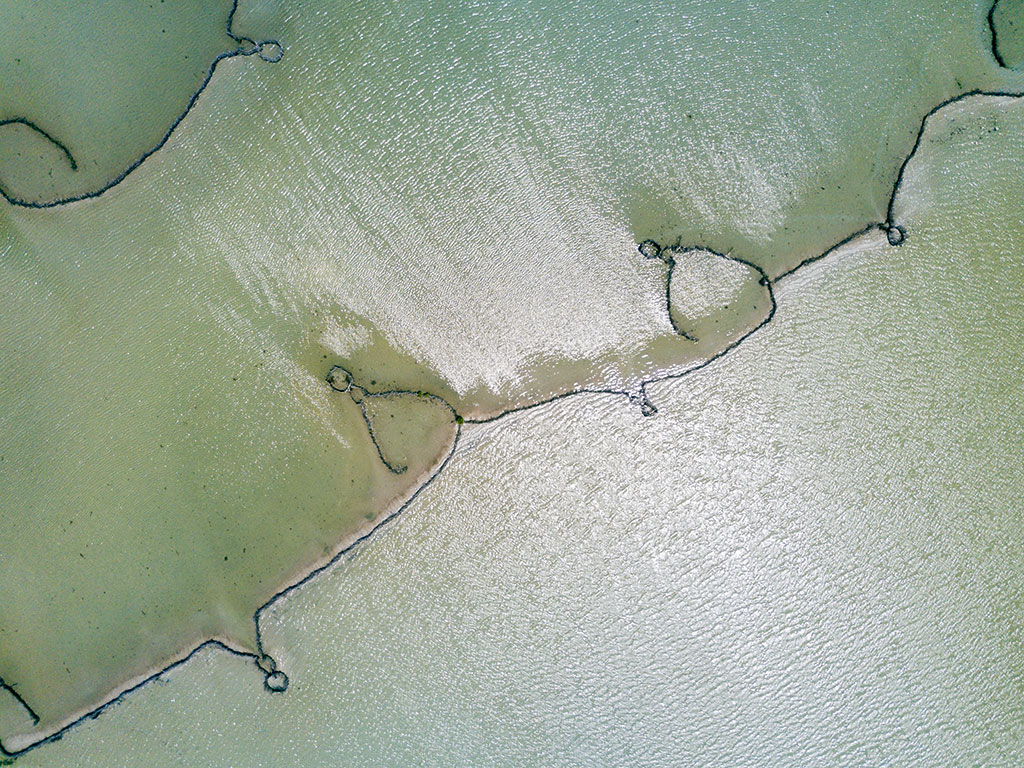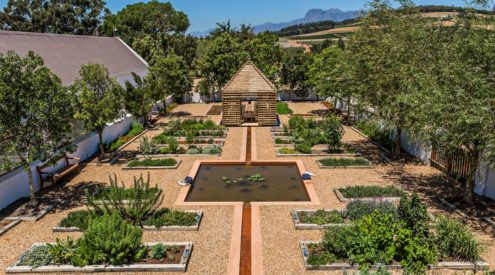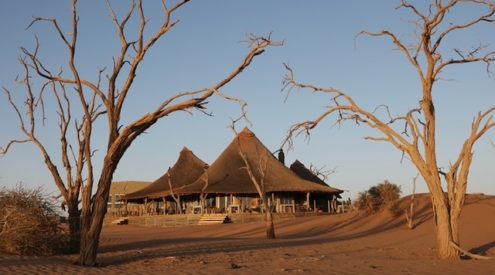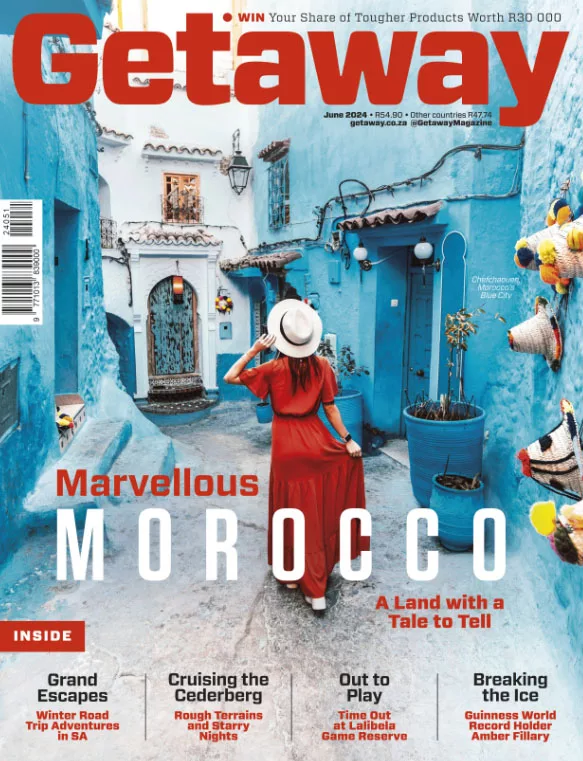A Saffer’s greatest travel motivation? To chill. Rivers and lakes are fantastic places to do just that. Here’s how to immerse yourself in Kwazulu-Natal’s Kosi Bay.
Words by Jess Nicholson and photographs by Teagan Cunniffe.

The Kosi channel between the lakes. Image: Teagan Cunniffe.
‘Quick Teagan, come. Bring that cat. I’m in terrible danger!’I grabbed her by the arm. ‘There is a black mamba eating another smaller, paler black mamba and I know I am next.’ Teagan, intrepid Getaway photographer, walked up to the writhing mass of snake and said, ‘Those are mole snakes.’
She tried to untangle the two and save the victim (knowing snakes, probably its own child). She then saved them both from the cat. Success – with minor lacerations, some from me gripping her arm, some from the cat. I decided the best way to deal with all of this stress was to have a bath. This was, after all, my mission: ‘Jess, go to northern KwaZulu-Natal and sink yourself into as many various waters as you can. Observe your surroundings from this fluid dimension.’
Perfect. Overcome by life? Get out of town. If possible get into water. Often John, my husband, comes home from work and finds me in the bath. He says, ‘Jess, there is a drought.’ Here at Kosi Bay Forest Lodge, snake stress or not, I had been told to get into water.
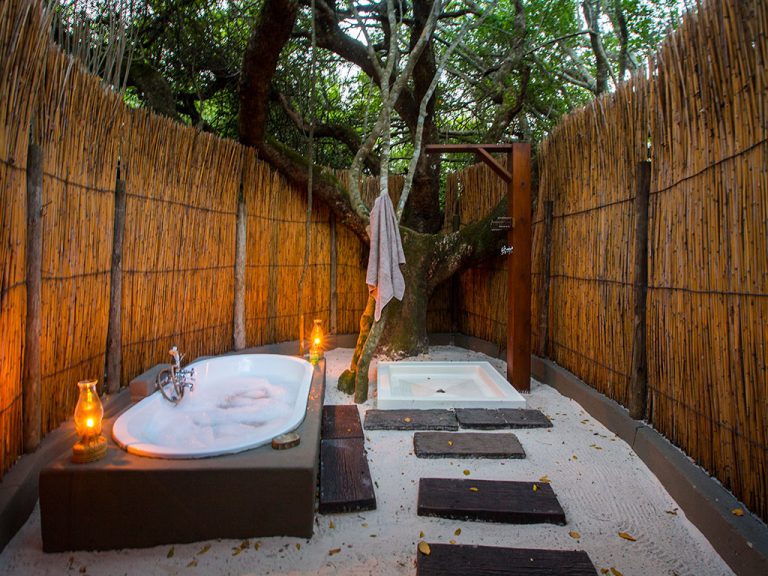
Bathing in a forest at Kosi Bay Forest Lodge. Image: Teagan Cunniffe.
It was actually my job to get into the bath. Lanterns had been lit. The bath was outside. The bath was in a forest.
I could take shinrinyoku to the next level. How jealous my Japanese and eco-hipster friends would be. (For readers not fluent in Japanese, shinrin-yoku means ‘forest bathing’: enter a forest as you would a bath, and remain there, submerged. No hiking or looking for geo-thingies or naming plants or ticking off birds. Just be in the presence of trees.You will gain health and illumination.) Here I was in an actual bath, within an actual forest. Double illumination coming for me.
I consoled myself, in the warm bubbles, that travelling in Africa is never without an edge. South Africa can be a nail-biting place.
Everyone needs time – and water – in order to stop seeing mambas and instead recognise mole snakes. In the water I went easy on myself. I forgave myself for another misunderstanding where Teagan had once again settled my nerves.
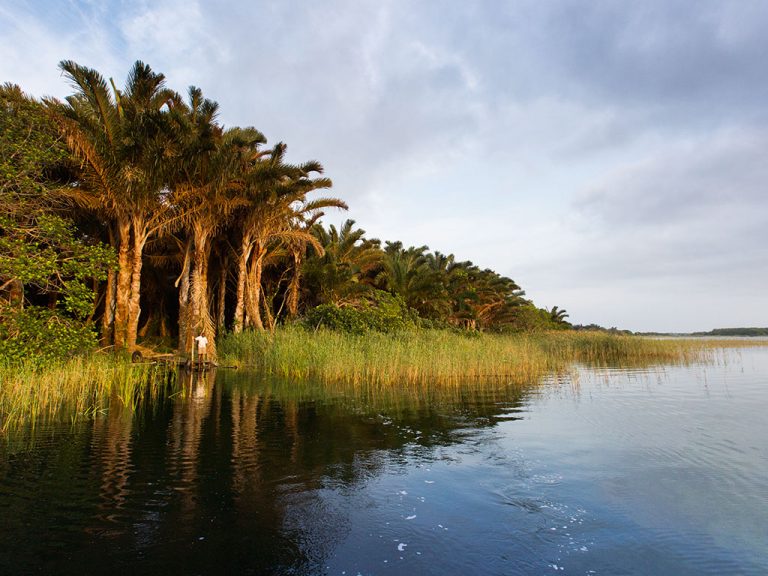
Colossal raffia palms line the water’s edge, providing a stately welcome after boating on the Kosi Lakes. Image: Teagan Cunniffe.
On a walk through raft a palms to the lake (a must), with an eagle-eyed guide to point out palm-nut vultures and antlions, I had nervously asked if anyone else had heard the low, dark grunt of a hippo. Our guide said the sound was at least two kilometres away – and as an informative aside, the very path we walked upon had been kindly carved out for us by the night foraging of these deadly vegetarians. Teagan then took me aside to explain, in a whisper, that one of our companions was suffering from indigestion (the food at Kosi Lodge is very delicious and tough to resist), and the sound I’d heard was really nothing to be afraid of.
I knew with the help of the forests and the water (and the Japanese masters) I would soon relax – travel Zen was just a splash or a wallow away. It was, in fact, impossible not to achieve at Kosi Forest Lodge. The place is all soft sandy paths underfoot and wind in the trees. Each bedroom is hidden from the next, with flourishes of sherry, woven grass for holding loo roll, insect repellent, an umbrella. A little further along, the swimming-pool deck looks onto the lake.
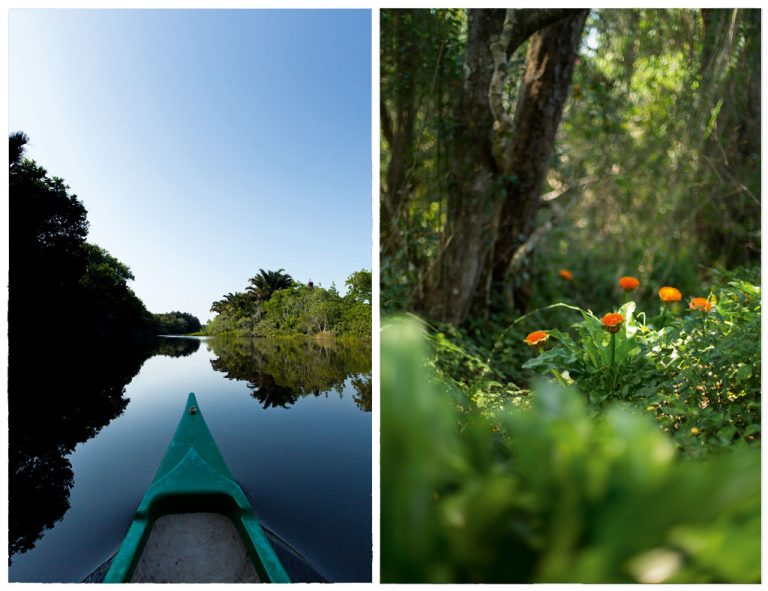
Left: Guided canoeing along the Kosi channels provides a croc’s-eye view of life on the water. Right: Blood lilies along hippo paths. Images: Teagan Cunniffe.
The next day we were in the river, canoeing through fields of water lilies, past wild figs and waterberries, listening to fish eagles and turacos and watching baby cormorants learn to fly. I began to hope that logs were crocodiles and even reached out to stroke a leguaan, although he got away. Our boat trip through the four Kosi Lakes was just as magical.
The water changes as you motor through the third lake, where the hippos breed in the fresh water, through the winding channel to the second lake where stumpnose, mullet, rock salmon and kingfish cruise the clear water above the white sandy floor spotty with the dens of sand prawns. Moving towards the sea, the lake gets saltier, mangroves line the edges and the fishtraps crochet paths through the water.
Needless to say by that evening, back at the lodge, I was blithely shooing away flamingos and wading out in the pristine warm water to talk to the fisherwomen. Never mind the hippos now. I was ready for anything.
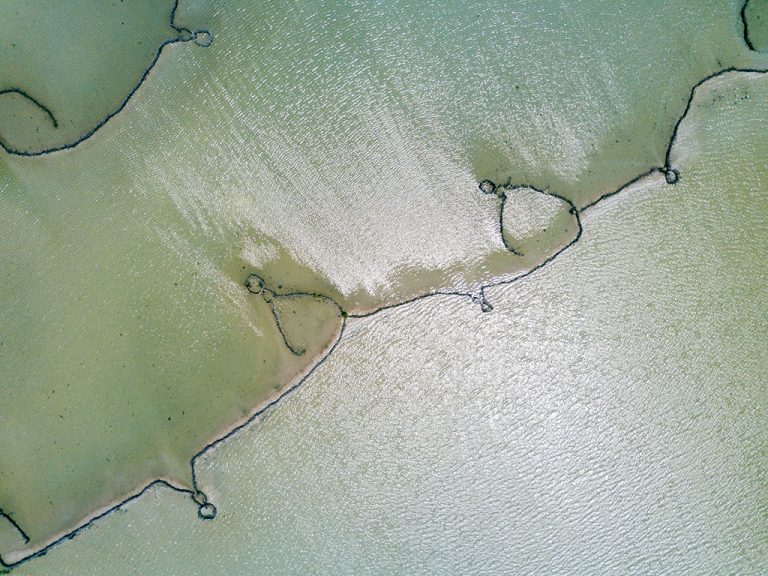
Fish traps in Kosi Lakes, beautiful by design, and a sanctioned and sustainable method of fishing. Image: Teagan Cunniffe.
And so, fortified, Teagan and I ventured alone to the Kosi River Mouth. We took a picnic and snorkels. No one else was there.
A warm waist-deep wade with our stuff on our heads took us to the reef. Here, at low tide, a current kindly escorts you over enormously bright and silver fish, from the middle of the estuary down towards the sea. You simply lie there, floating over the coral, pointing and breathing. I’m not sure what the Japanese masters would call this type of bathing – sharks could come at you from one end, crocs from the other, maybe moray eels from the side, but in that moment, it absolutely didn’t matter.

Traps made from sticks enable both fishermen and birds to catch their dinner. Image: Teagan Cunniffe.
Do this
Go snorkelling at Kosi Mouth. Low tide is best. The lodge will pack a picnic lunch, all the gear you need and arrange transport for R715 per person (or you can go alone if you have a 4×4; car guards charge R50). A permit to get to the estuary is R58 per person and R53 per vehicle.
Canoe through the water lillies. A guide will do the paddling while you sit back and drift along the river. A must for nature lovers and bird watchers.
Motor around the Kosi Lakes. Boat trips are a half-day or full-day excursion through the channels and lake systems. R550 per person including lunch.
Follow hippo paths through the raffia palms. Palm-nut vultures and antlions can be very difficult to spot. The lodge guides are entertaining, have better eyesight and are clued up on all the flora and fauna. The walk takes two hours.
Fish the lakes and the sea. You’ll need your own fishing gear and a permit approximately R95.
Find the turtles. In summer you can join an evening transfer to Bhanga Nek beach to see the hatchlings. R825 per person.
Also read: The leatherback turtles of iSimangaliso Wetland Park
Getting there
Kosi Bay From Durban you drive all the way up the North Coast for five hours, then turn right just before Mozambique. The last bit requires a 4×4; if you don’t have one, there is safe parking and transfers twice a day from Manguzi.
Driving to the Kosi Bay estuary along the sandy, bumpy road was no problem for the big Ford Everest XLS 2.2. With its Terrain Management System taking care of all the 4×4 guesswork, it was actually impressively easy. All we needed to do was cycle through its four modes – default, snow/grass/ mud, sand and rock – via a rotary dial on the centre console, pick which one we needed, and go! And it was just as great for cruising on tar. In addition, being high up was brilliant for game viewing – within an hour of entering the Hluhluwe-iMfolozi Game Reserve, we’d seen four of the Big Five. ford.co.za
When to go
Winter temperatures are moderate with beautiful days; March to June is best, October can be windy (the lakes can get too choppy for boat trips). Swimming and snorkelling are possible all year round. Summer has more rain and temperatures can rise to 30˚C, but mid-November to mid- January is the only time to see turtle hatchlings.

Stay here
Kosi Forest Lodge
Sandy paths lit by lanterns at night lead to your bedroom and heavenly outside bath and shower. Interleading family rooms are available. The lodge has a swimming pool and deck overlooking the lake, and a lounge at the restaurant (although dining is outdoors when the weather holds). From R2170 per person sharing, including all meals, guided walks and a canoe trip. isibindi.co.za
This article first appeared in the February issue of Getaway magazine.
Our February issue features 12 of the best tented-camps around the country, fun-filled water adventures in Northern KZN, Madagascar by motorbike plus a guide to finding everyday magic in underrated Lisbon.
